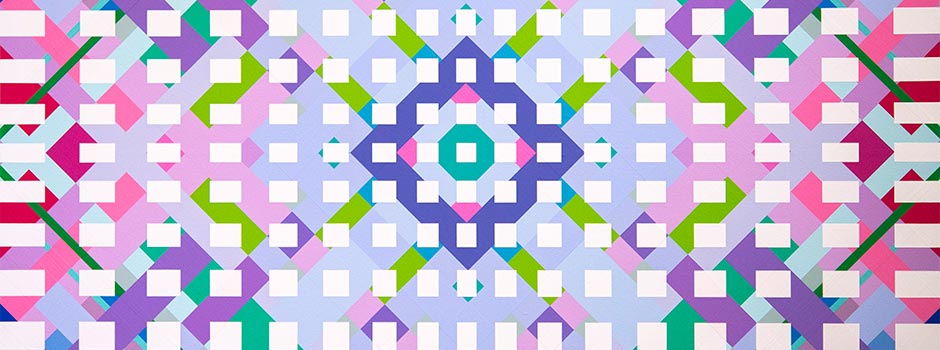
Solo exhibition at Ayyam Gallery, Dubai (14 Nov 2022 - 5 Jan 2023) The Common Pursuit of Happiness by Mouteea Murad
Nov 01, 2022 INSPO, Exhibition

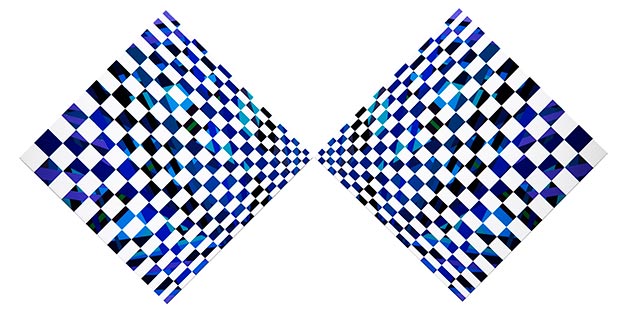 Mouteea Murad 'Trial No. 138', 2018, Acrylic on canvas, 100 X 200 cm. (diptych) / Courtesy of Ayyam Gallery and the artist
Mouteea Murad 'Trial No. 138', 2018, Acrylic on canvas, 100 X 200 cm. (diptych) / Courtesy of Ayyam Gallery and the artist
"If there is an abiding theme in The Pursuit of Happiness it is the idea that you come into the world already shaped by other people's past histories." (Douglas Kennedy).
The soul is a timeless and boundless gift God has accorded us and us only. A gift that needs to be cherished, studied and delved into. Unfortunately, the views and values of society often lead towards misconception and aesthetic abuse. The act of creation leads to a deeper understanding of our psyche. Diving into our complex minds, the most abstract matter, we enter a quest towards reality, our version of the truth. For whoever knows oneself will know God. The time spent discovering and creating becomes one of healing and worship. The artist invites the viewer to experience this relief by participating.
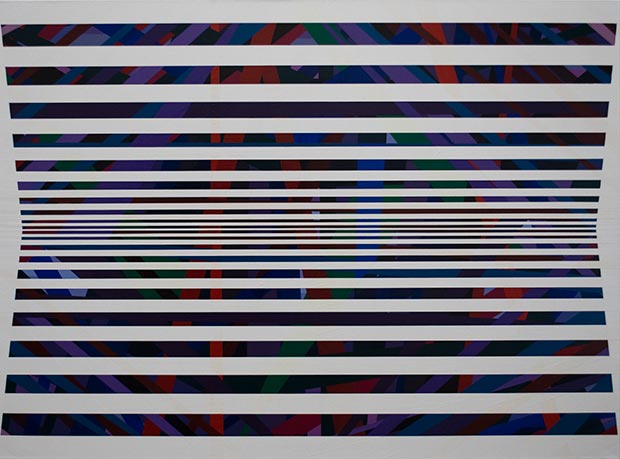 Mouteea Murad 'Trial No. 139', 2020, Acrylic on canvas, 185 X 250 cm / Courtesy of Ayyam Gallery and the artist
Mouteea Murad 'Trial No. 139', 2020, Acrylic on canvas, 185 X 250 cm / Courtesy of Ayyam Gallery and the artist
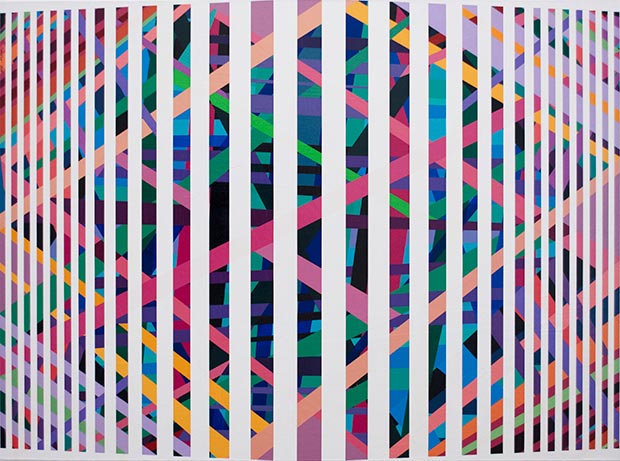 Mouteea Murad 'Trial No. 140', 2020, Acrylic on canvas, 185 X 250 cm / Courtesy of Ayyam Gallery and the artist
Mouteea Murad 'Trial No. 140', 2020, Acrylic on canvas, 185 X 250 cm / Courtesy of Ayyam Gallery and the artist
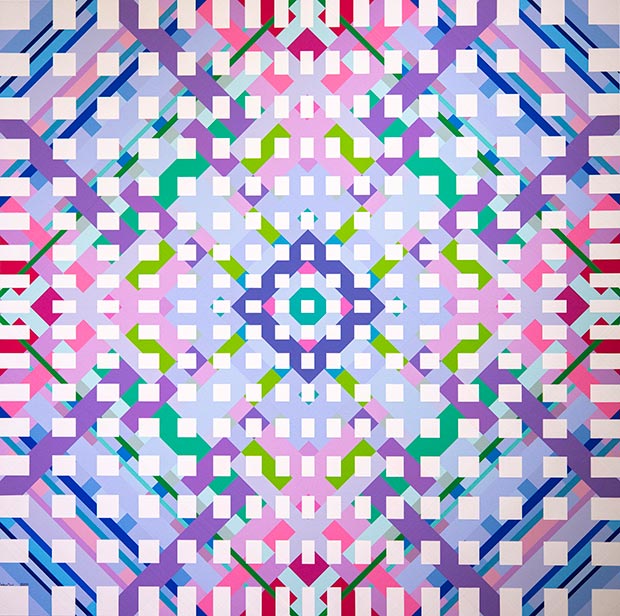 Mouteea Murad 'Trial No. 141', 2020, Acrylic on canvas, 200 X 200 cm / Courtesy of Ayyam Gallery and the artist
Mouteea Murad 'Trial No. 141', 2020, Acrylic on canvas, 200 X 200 cm / Courtesy of Ayyam Gallery and the artist
"This body of work in its entirety is a conceptual artwork, a journey. The scenography tells my story. Along with my faith, my precise and mathematical creations have played a detrimental role in revitalizing my spirit. Both become integral coping mechanisms in light of my past struggles. Furthermore, these therapeutic tools have led to a positive social change in my quotidian. My interest in the essence of Art and the questions it raises allow me to plan my life methodically and make professional and personal decisions alike. Through creation, I mitigate all inner sadness, anger, and congestion. I hope this process helps the viewer understand that the creative process is as important as the final product, if not more important.
The technical aspect of my work is broken down into parts, the execution and the creation. Each piece is interactive and a crucial chapter of the story, between the wider audience and myself. A start that leads toward bringing the artwork to life. The execution process is divided into two main tasks. The first part is mine, and it is the task of setting up the second, yours. Each artwork in this space is accompanied by 'instructions' that are straightforward but vague. It is then up to you to complete the painting, creating an experiential exchange, a dialogue between myself, the work, and the audience.
The result will awaken the viewer's creative state and unleash an unknown side. A new form of energy will flow through my co-authors. This dialogue will help me understand my purpose by enhancing others' perceptions and acceptance of my work. This experience will help us further understand each other and open ourselves to misinterpret or comprehend one another. Creating space for human tolerance is the goal. This interaction will hopefully change the viewer's perception of my completed work."
 Mouteea Murad 'Trial No. 155', 2022, Acrylic on canvas, 200 X 200 cm / Courtesy of Ayyam Gallery and the artist
Mouteea Murad 'Trial No. 155', 2022, Acrylic on canvas, 200 X 200 cm / Courtesy of Ayyam Gallery and the artist
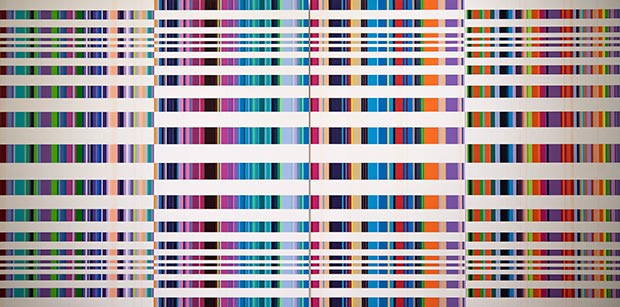 Mouteea Murad 'Trial No. 157, The way of love, 2022, Acrylic on canvas, 200 X 400 cm. (diptych) / Courtesy of Ayyam Gallery and the artist
Mouteea Murad 'Trial No. 157, The way of love, 2022, Acrylic on canvas, 200 X 400 cm. (diptych) / Courtesy of Ayyam Gallery and the artist
 Mouteea Murad 'Trial No. 158, How can the singer not sing', 2022, Acrylic on canvas, 200 X 400 cm. (polyptych) / Courtesy of Ayyam Gallery and the artist
Mouteea Murad 'Trial No. 158, How can the singer not sing', 2022, Acrylic on canvas, 200 X 400 cm. (polyptych) / Courtesy of Ayyam Gallery and the artist
Mouteea Murad draws influence from geometric forms and motifs of Islamic art. He began his career as a painter, working on monochromatic, expressionist compositions. In 2007, his work took on a renewed outlook that redirected his painting style, exploring relativity, spatiality, and the visual dynamic of geometric forms.
His work differs from those of his contemporaries; his works present pure abstraction and harmonious colour. When the artist first approached the Shabab Ayyam competition in 2007, he submitted figurative works. However, in the seven months between registration and submission, Murad created works that evolved and reflected the gradual stages of pure abstraction. In his compositions, the artist builds on the breakthroughs of previous movements, experimenting with automatic brushwork, the illusionistic perspective of Op art, the symmetry of geometric abstraction, and the collapsing planes of Suprematism. In his most recent series, his relationship with mathematics plays an integral role, with the Fibonacci numbers and sequence at its centre. Murad continues to draw inspiration from Islamic art while employing forms and lines predominantly defined by algebraic functions, allowing his work to see a unification of spirituality and formalism.
Murad lives and works in Sharjah, UAE. He received a Bachelor of Art from the Faculty of Fine Arts, Damascus (2001). Selected solo exhibitions include Ayyam Gallery Al Quoz, Dubai (2018, 2016); Ayyam Gallery Beirut (2018, 2011); Ayyam Gallery DIFC, Dubai (2017, 2011); and Ayyam Gallery Damascus (2010). His work is part of private and public collections, including the Jordan National Gallery of Fine Arts.
Comments
Add a comment
Commenting is not available in this section entry.